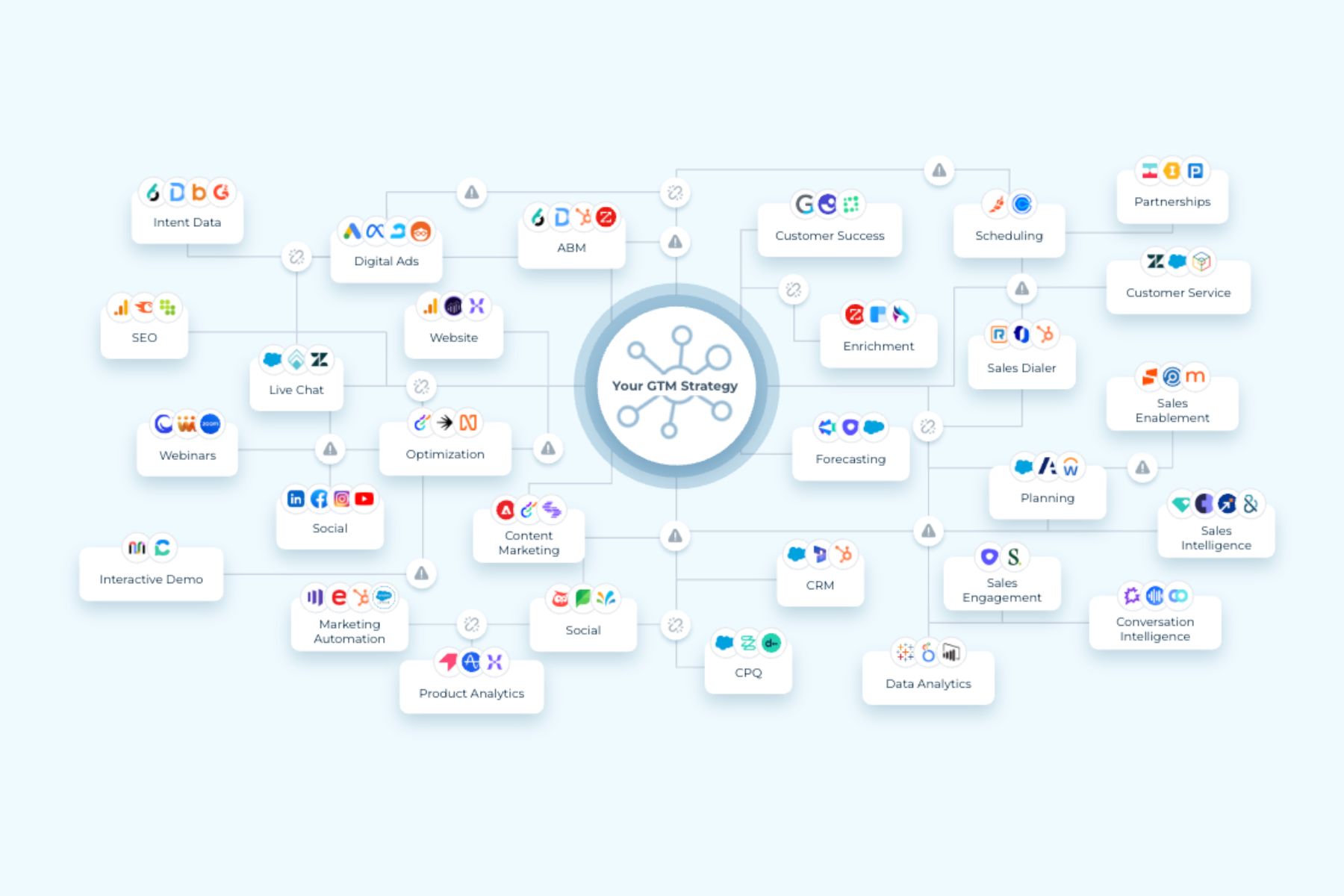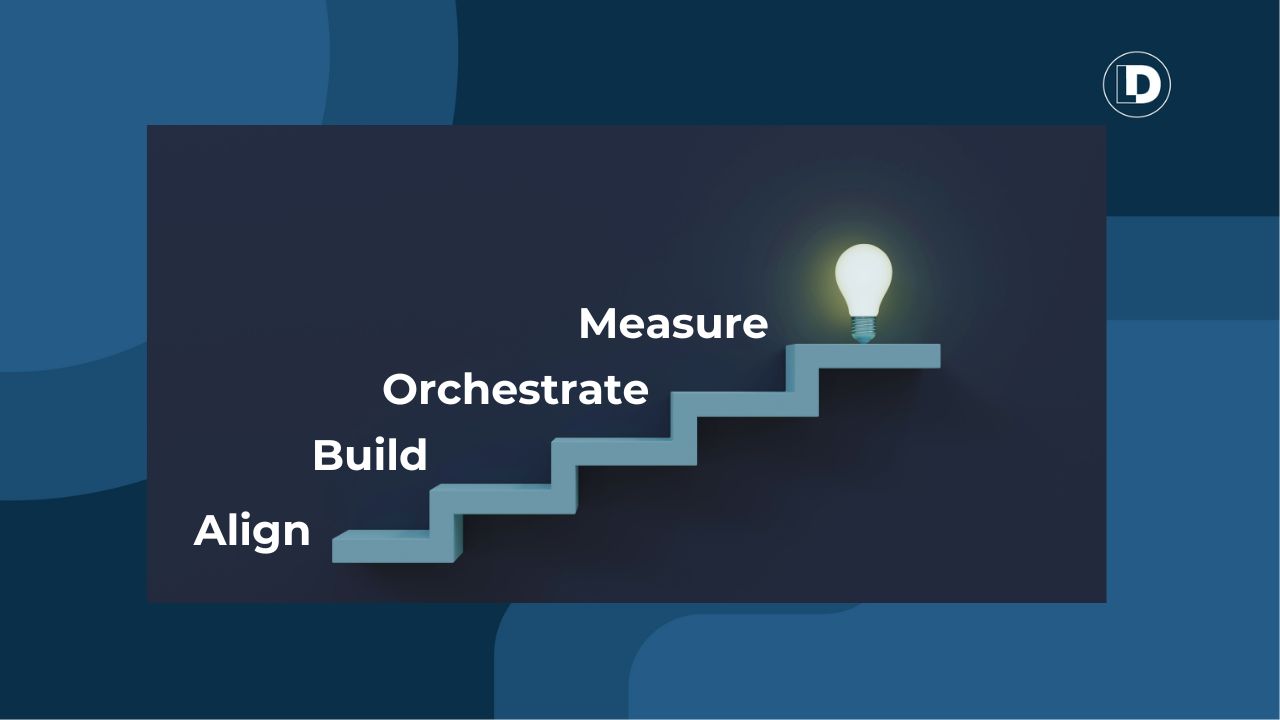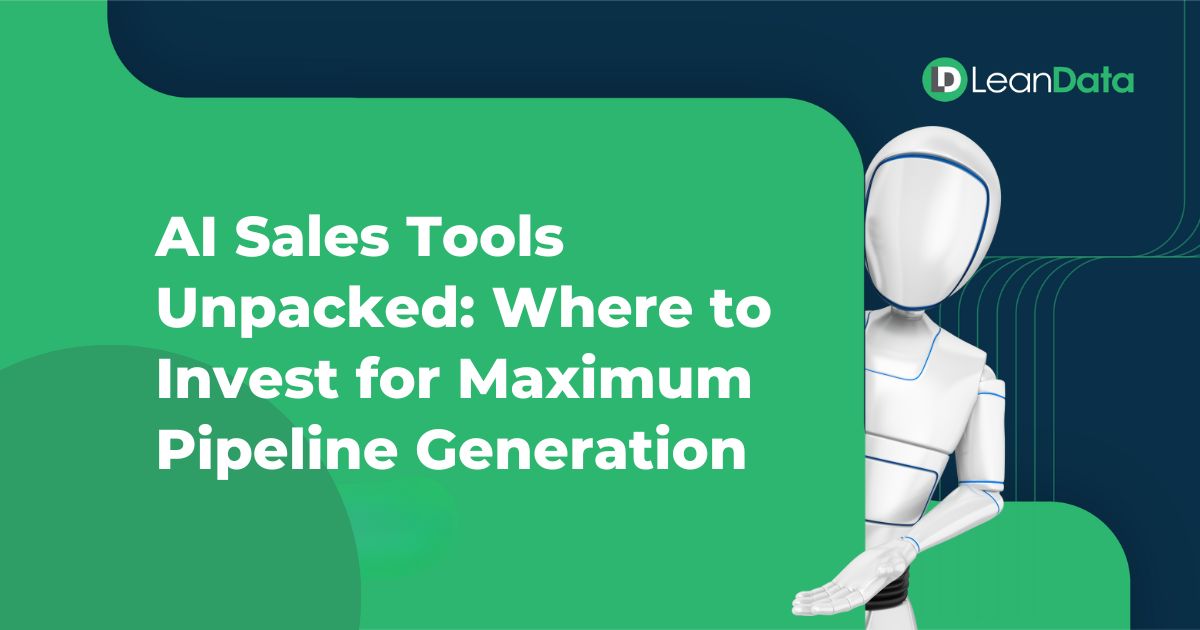What Intelligent Go-to-Market Orchestration Looks Like in Practice
When you ask enterprise leaders where their GTM strategy breaks down, they rarely point to a single tool or team. The problem is bigger, and often messier.
Disconnected systems.
Inconsistent handoffs.
A mountain of buyer signals with no clear path to act.
This isn’t a tool problem. It’s an orchestration problem. And solving it has become a top priority for B2B leaders across sales, marketing, and customer success.
That’s why intelligent GTM orchestration is gaining attention. But what does it actually look like in practice?
Let’s break it down.
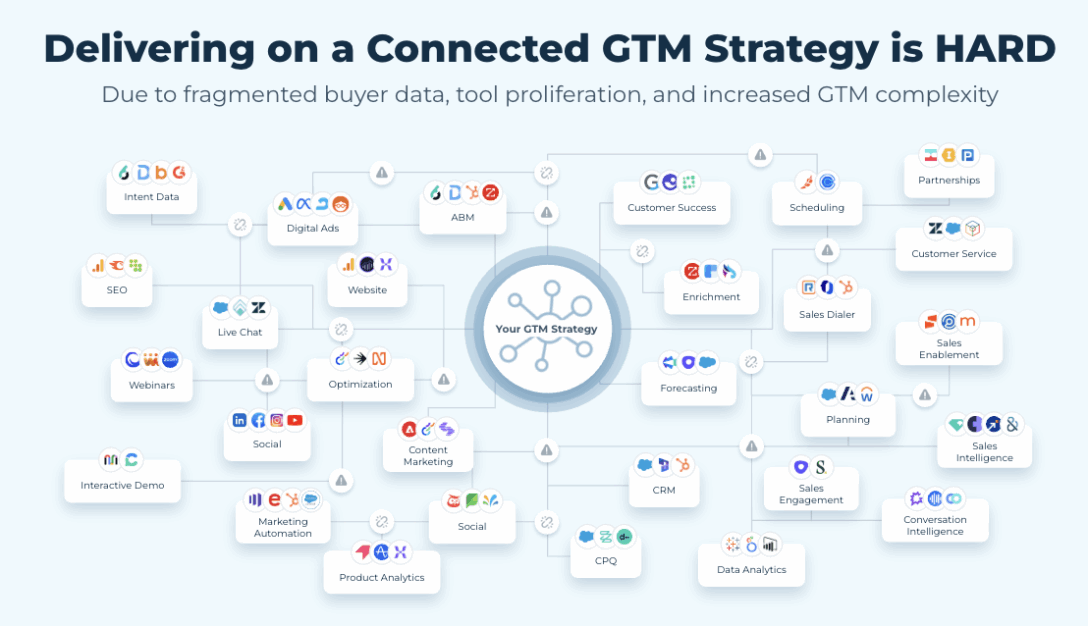
The Shift: From Isolated Fixes to Connected GTM Strategy
Most GTM teams spend years layering tools, point solutions, and patches across different parts of the buyer journey. While each fix solves a problem in the moment, the bigger picture suffers.
Signals get lost.
Timelines slip.
Metrics misalign.
That’s where intelligent GTM orchestration comes in. Instead of reacting to problems one at a time, orchestration focuses on aligning your people, processes, and systems to work in concert with the buyer journey.
This requires stepping back to look at the entire revenue lifecycle, from first touch to customer expansion, and building a strategy that connects the dots.
Zooming Out: Start with the Buyer Experience
First, organizations need to zoom out and anchor their strategy around the buyer journey. This is no longer just a marketing responsibility.
When every GTM team maps its work to buyer stages like awareness, evaluation, purchase, and advocacy, it becomes easier to build coordinated plays across the organization.
Plus, this approach helps expose operational breakdowns. For example, buyers may get stuck in the handoff between marketing and sales or face friction during onboarding due to misaligned data.
The orchestration mindset means solving for those gaps before they show up in revenue numbers.
50 %
5X – 25X
Why Orchestration Is So Difficult
Getting GTM orchestration right is hard for a few key reasons:
- Buyer data is fragmented across platforms
- There’s a proliferation of tools in the tech stack
- Different teams define success in different ways
- Workflows are stitched together manually
- There’s no shared framework for coordinating plays
As a result, MQL-to-revenue conversion rates are shockingly low. According to industry benchmarks, only 2.9 percent of MQLs ever become revenue. And fewer than half of B2B sellers are hitting quota.
These numbers aren’t just stats. They’re symptoms of disconnected execution.
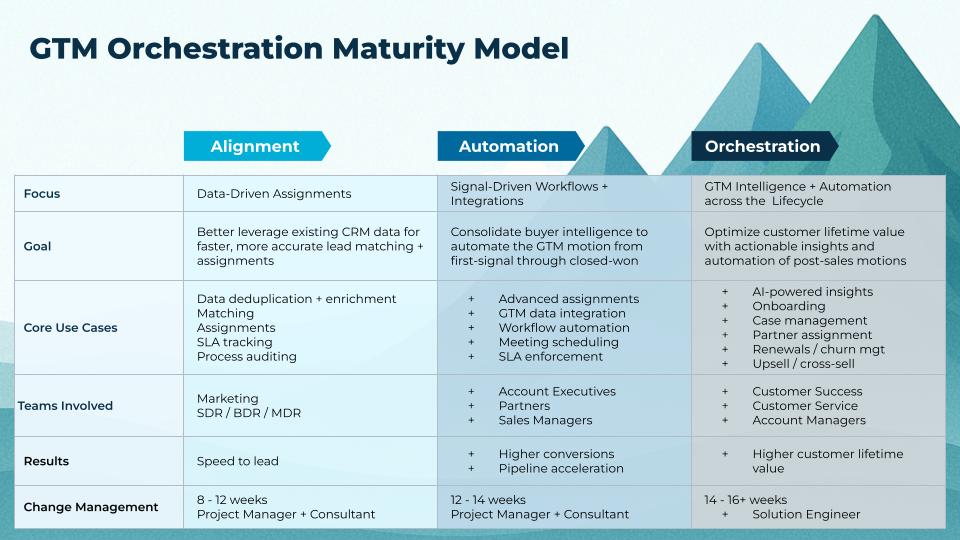
The GTM Orchestration Maturity Model
LeanData’s GTM Orchestration Maturity Model helps enterprise companies understand where they are today and where they want to go.
This model includes three levels:
- Alignment: Teams establish foundational processes like lead matching, assignment, and SLA tracking using existing CRM data.
- Automation: Workflows become signal-driven and automated, connecting data across the buyer journey through integrations and routing logic.
- Orchestration: Insights from all stages are used to optimize every motion, from acquisition to expansion. Teams work with agility and have a unified view of the buyer journey.
Each level brings more visibility, speed, and scalability to the GTM engine. Most importantly, it helps enterprises move from reactive processes to proactive strategy.
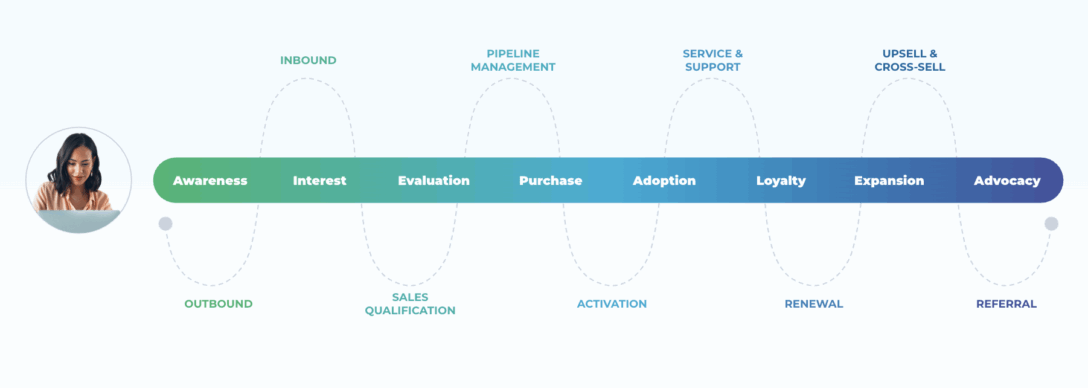
Common Use Cases Across the Revenue Lifecycle
Orchestration isn’t limited to lead routing or SDR handoffs. It applies to every stage of the revenue lifecycle.
Here’s how intelligent orchestration can support different use cases:
Acquisition
- Lead-to-account matching
- Speed-to-lead workflows
- ABM signal routing
Retention
- Churn risk alerts
- SLA tracking for support cases
- Renewals routing
Expansion
- Cross-sell and upsell workflows
- Buying group engagement plays
- Automated QBR scheduling
These use cases rely on modular capabilities like automation, scheduling, data quality, and integrations. When orchestrated together, they drive measurable impact.
What GTM Orchestration Unlocks for Enterprise Leaders
Enterprise leaders who embrace intelligent GTM orchestration gain:
- Better visibility into the buyer journey
- Aligned sales, marketing, and CS motions
- Faster time to engagement and response
- Scalable workflows that evolve with the business
- Data-driven decisions across the GTM engine
Plus, they gain a competitive advantage by building an adaptable revenue engine that meets buyers where they are.
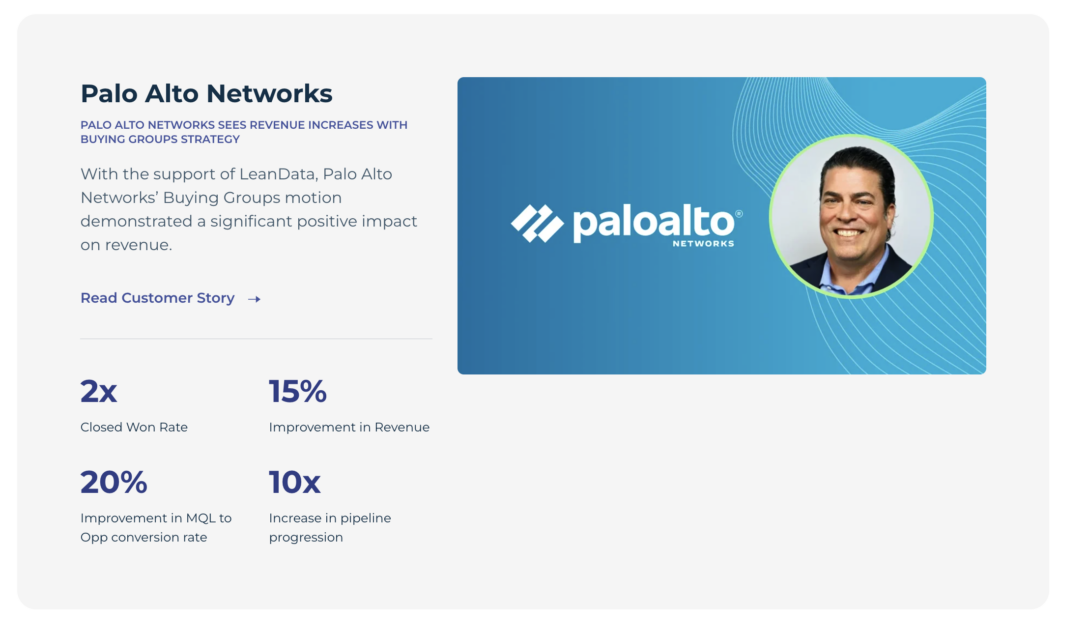
The Next Step for Your GTM Strategy
If your teams are still stitching together workflows manually or struggling to connect data across tools, now is the time to rethink your approach.
GTM orchestration isn’t just a buzzword.
It’s the foundation for sustainable growth, especially in enterprise environments with long buying cycles, complex teams, and high-value deals.
Companies that operationalize it today will be the ones defining what “good” looks like tomorrow.
Would you like help mapping your current GTM maturity and identifying orchestration opportunities? Start by zooming out and anchoring your strategy around the buyer journey.
That’s where intelligent growth begins.







